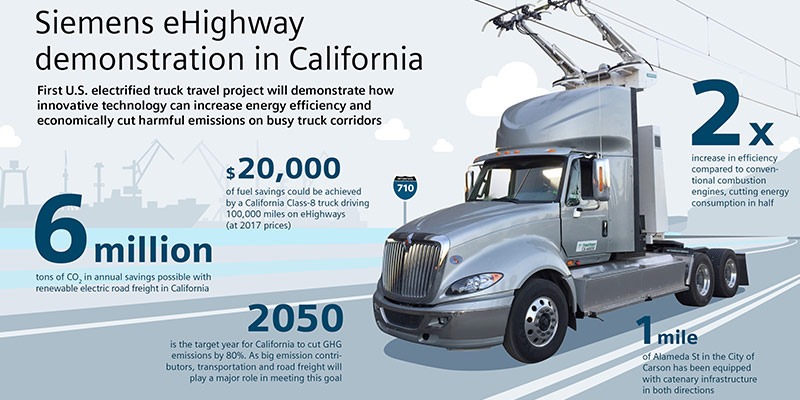
We move a lot of stuff around on trucks – enough that they account for 23% of US greenhouse gas emissions and are a constant fixture on any highway. Just as with electric cars, an electric truck could end up being cheaper, cleaner, and easier to drive, which is why most of the big truck manufacturers are working on producing some sort of electric-powered truck.
Most of them are just using batteries, as you would expect, but experiments run by Siemens in Sweden, Germany, and California have been successfully putting charging cables above highways so that trucks can connect and charge while they drive. This system is already being used for buses in some cities, and while your personal car probably won’t have this system, there’s low-volume noise about using magnetic resonance to charge vehicles on what is basically an electric highway.
What’s wrong with just batteries?
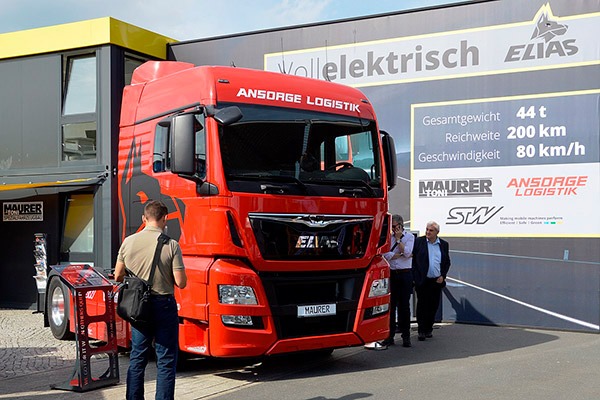
Yeah, why not just slap a battery in there? Some battery-powered trucks are already on the streets, and they’re certainly viable, but as with any battery-powered device, there are challenges: batteries are bulky, tend to have short range (a problem for long-haul trucking, for sure!), take a while to charge, and charging infrastructure (especially for trucks) is pretty limited right now.
That’s not to say it won’t work, just that there are some challenges for now, and the first few generations of electric trucks are probably going to be mostly hybridized.
And how do these electric highways help?
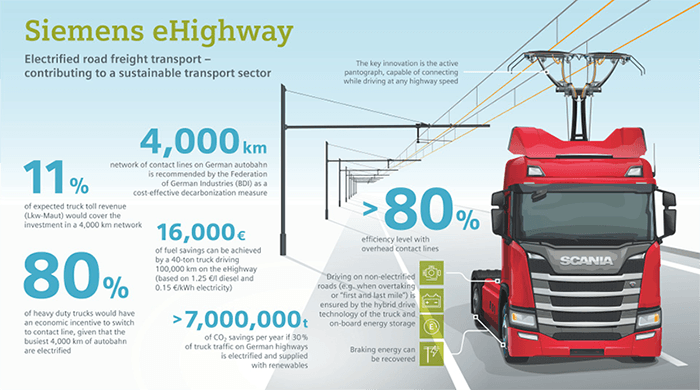
Because trucks typically need to run for long periods of time without stopping, frequent charging stops aren’t ideal. The Siemens “eHighway” projects allow trucks to connect to electric wires suspended over stretches of road, letting them charge up their battery while they’re still moving. Once they run out of wires, they can run on their battery power, and when that runs out, their hybrid engine can kick in.
The “pantographs” (the poles they carry on top to hook up to the wires) these trucks carry can be raised and lowered quickly and even have an automatic disconnect function if the truck needs to suddenly swerve.
You may have already seen this sort of system in action on trolleybuses, which also use pantograph poles to power buses as they ferry passengers through cities. This technology has been in use for over a hundred years already, so it’s really just a matter of scaling it up for trucks and putting it over highways.
While current projects are mostly focused on the hybrid-drive trucks being produced by Siemens, one could easily see this sort of technology taking off as a way to supplement charging stations for full-electric trucks.
Where/how will it be implemented?
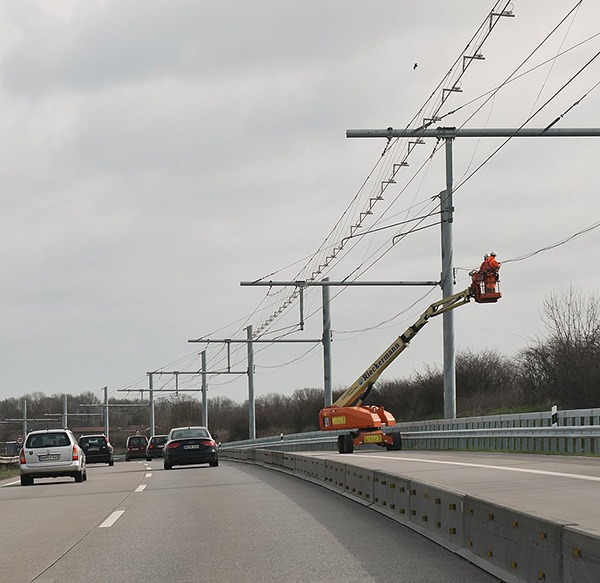
Currently, there are three sites where the technology is being tested: the Autobahn in Germany, north of Stockholm, and near the Long Beach/Los Angeles ports. Don’t worry, though, you’re unlikely to see massive spiderwebs of wires dominating every highway anytime soon, as it’s likely only going to be practical to implement on heavily-trafficked trucking routes, and it’s not necessary to put along every kilometer. Instead, it’ll likely be relatively short stretches of the road where trucks can charge up for a while before going back onto battery/hybrid power.
And why are we doing this again?
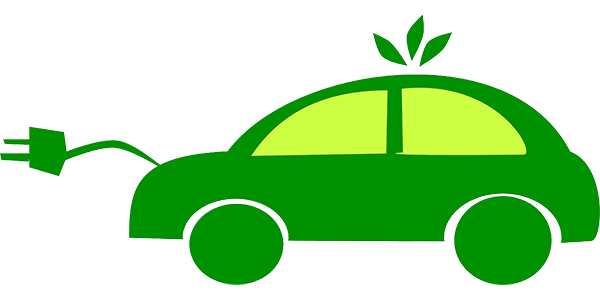
Mostly, we’re trying to get cleaner: transitioning to electric trucks would make a very significant dent in emissions and pollution. Places like California, which has had pollution issues for quite a while, are especially interested in this benefit. Trucking companies are unlikely to make the transition without a monetary incentive though, which is why there’s also a lot of emphasis on ensuring that the fuel savings offered by electric trucks in general (and the eHighway system in particular) can more than offset the upfront switching cost.
Are electric highways the answer?
At least in the short term, charging while in motion is a great solution to the issues faced by electrifying long-haul trucks. Whether it’ll be Siemens’ eHighway system or something else isn’t clear yet, but they do have the most developed project currently out there.
If you don’t like the idea of all those cables overhead, though, you might prefer another idea they’ve been testing in Sweden: embedding magnetic induction systems into certain roads that could potentially even charge your personal vehicle.
That’s a whole different ballgame, though. For now, the most likely scenario, if this system ends up working out, is the gradual electrification of some high-traffic short-haul routes, especially in areas where the residents might benefit from cleaner trucks.
Image credits: Siemens Press, Datoteka:A1 eHighway im Bau 03.19e-Ausschnitt, MAN TGX 2018 electric truck
Get the best of IoT Tech Trends delivered right to your inbox!







